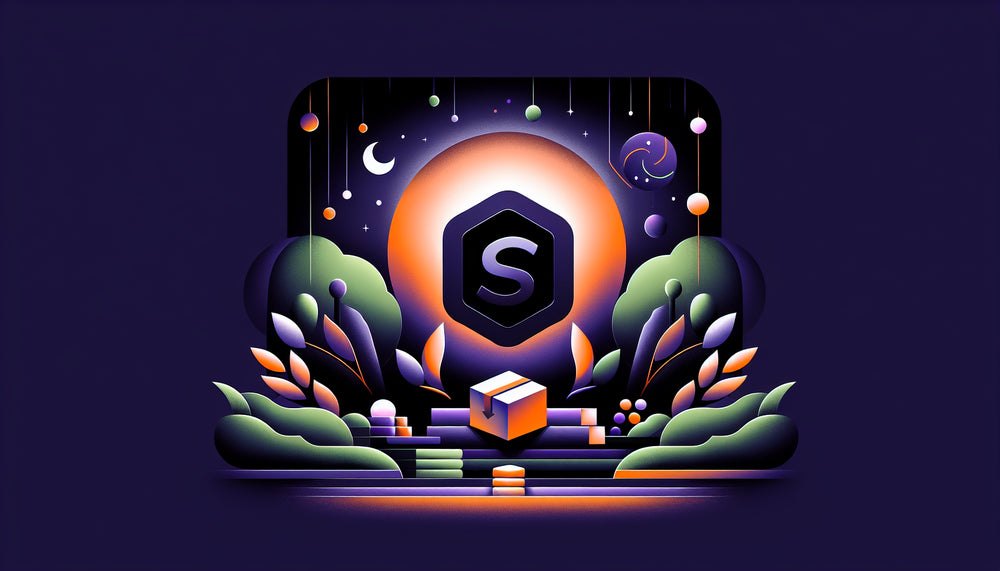How Many Webhooks Can I Take in Shopify

Table of Contents
- Introduction
- What Are Shopify Webhooks?
- How Many Webhooks Can I Set Up?
- Why Should You Use Shopify Webhooks?
- Setting Up Webhooks in Shopify
- Handling Webhook Events
- Advanced Strategies: Scaling with EventBridge
- Summary and Conclusion
- FAQ
Introduction
Imagine receiving up-to-date notifications about crucial activities happening in your Shopify store without the need to constantly refresh your browser. That's the power of webhooks—allowing businesses to automate responses to significant events like new orders, product updates, and inventory changes. But just how many webhooks can you take in Shopify? Ease into this deep dive where we'll explore everything you need to know about Shopify webhooks, their limitations, and how to use them effectively to optimize your e-commerce operations.
In this post, we will unravel the intricacies of Shopify webhooks, including how they function, how many you can set up, and techniques to handle them efficiently. Whether you’re an experienced Shopify user or a newbie, this detailed guide will offer valuable insights to ensure that you make the most out of Shopify’s webhook capabilities.
What Are Shopify Webhooks?
Webhooks are automated message triggers that send data to a specified URL when certain events occur in your Shopify store. For example, you can set up a webhook to notify you every time an order is created or a product inventory is updated. These notifications, usually in the form of HTTP POST requests, contain important data related to the event.
How Many Webhooks Can I Set Up?
One of the common questions Shopify users have is the number of webhooks they can integrate into their store. As of my last update, Shopify allows merchants to create up to 100 webhooks per store. This limit ensures that store resources aren't overwhelmed while still providing ample room for necessary notifications.
However, the number of webhook subscriptions available to you may vary depending on the API version you are using and the specific needs of your application. By understanding your requirements thoroughly, you can effectively allocate your webhook "budget."
Why Should You Use Shopify Webhooks?
Webhooks serve as invaluable tools for any Shopify store owner who wants real-time data updates without the hassle of polling APIs. Here’s why you might want to use them:
- Automated Processes: Automatically update CRM or ERP systems, synchronize inventory across multiple platforms, or trigger marketing automation workflows.
- Real-Time Notifications: Receive immediate updates on critical events such as order creations, inventory changes, and customer updates.
- Efficient Resource Usage: Instead of periodically calling the Shopify API, webhooks push updates only when necessary, saving bandwidth and reducing server load.
Setting Up Webhooks in Shopify
Step-by-Step Guide
Setting up webhooks in Shopify is relatively straightforward. Follow these steps:
- Navigate to Webhooks Settings: Go to your Shopify admin panel, navigate to Settings > Notifications, and scroll down to the Webhooks section.
- Create a Webhook: Click on Create a webhook. You will be prompted to fill in necessary details such as the event that will trigger the webhook, the format (JSON or XML), and the URL endpoint where the data should be sent.
- Complete the Setup: Save the webhook, and Shopify will now send data to the specified URL whenever the selected event occurs.
Best Practices
Efficient webhook management is critical to optimizing their effectiveness:
- Secure Your Webhooks: Verify webhook signatures to authenticate that the requests are genuinely from Shopify.
- Handle Failures Gracefully: Implement retries or notifications for failed deliveries to ensure no updates are missed.
- Optimize Endpoints: Use performant endpoints that can handle spikes in webhook traffic, especially during peak shopping periods like Black Friday.
Handling Webhook Events
When dealing with webhooks, it’s crucial to have a solid understanding of handling the incoming data effectively:
Validate Requests
Ensure you validate each incoming webhook to confirm it's a legitimate request from Shopify. This can be done by verifying the HMAC header that Shopify includes in each request.
Efficient Processing
To process webhook events efficiently:
- Queue Processing: Immediately acknowledge receipt and then process the request asynchronously using a queue system like Amazon SQS or RabbitMQ.
- Error Handling: Implement comprehensive error handling and logging to debug issues quickly and reliably.
Examples and Case Studies
Consider a Shopify store that experiences high traffic:
Case Study: Barcode Inventory Synchronization
A retail business needed to synchronize inventory data across multiple locations in real-time. By setting up webhooks for inventory updates, the business was able to maintain accurate stock levels across its online and physical stores without the inefficiencies of frequent polling.
Advanced Strategies: Scaling with EventBridge
For businesses needing to manage a high volume of webhooks, relying solely on Shopify’s webhook service might lead to bottlenecks. Amazon EventBridge provides a scalable solution for webhook management:
- Scalability: EventBridge can handle a high volume of events and supports advanced routing rules to direct webhook events to appropriate services.
- Cost-Efficiency: By processing webhook events serverlessly, infrastructure costs are significantly reduced.
- Reliability: Built-in retry and error handling mechanisms ensure that no webhook events are lost.
Summary and Conclusion
Webhooks are essential for real-time data synchronization in Shopify, capable of automating various workflows and ensuring timely updates across your systems. While Shopify imposes a generous limit of up to 100 webhooks per store, the key to optimizing their use lies in secure and efficient handling of the webhook events.
By following best practices, validating requests, and leveraging advanced solutions like Amazon EventBridge for high-volume use cases, you can ensure that your Shopify operations run smoothly and effectively. Whether you're managing inventory updates, customer notifications, or order processing, webhooks help keep your data synchronized and your business agile.
FAQ
How many webhooks can I set up in Shopify?
Shopify allows you to create up to 100 webhooks per store. This limit ensures server efficiency while providing sufficient room for needed notifications.
What events can I subscribe to using Shopify webhooks?
You can subscribe to numerous events, including order creation, update, deletion, product additions, inventory changes, and many more.
How do I verify that webhook requests are legitimate?
Verify webhook signatures by checking the HMAC header included in Shopify’s requests against a shared secret.
What should I do if my webhook endpoint fails to respond?
Implement retry mechanisms and send alerts for any failures to ensure reliability in delivery and handling of webhook events.
By mastering the use of webhooks, you place your Shopify operations in sync with real-time data. Dive into your Shopify admin today, set up those webhooks, and let the automation begin!
Discover more customization possibilities.
Whether you’re looking to create a unique storefront, improve operations or tailor your Shopify store to better meet customer needs, you’ll find insightful information and expert tips here.

Top Apps for Schema and Structured Data on Shopify Storefronts

Rich Text Metafield Shopify: A Comprehensive Guide

Comprehensive Guide to Shopify Import Metafields CSV

Shopify Image Metafields: The Ultimate Guide

Efficiently Using Shopify GraphQL to Retrieve Product Metafields

Shopify How to Make a Custom Gift Card

Unlocking the Power of Shopify GraphQL Product Metafields

Shopify GraphQL: Revolutionizing E-commerce Development

Maximizing Your Shopify Store with Global Metafields

Shopify Flow Metafields: Enhancing Automation with Custom Data

Shopify Filter Products by Metafield

Shopify if Metafield Exists: A Comprehensive Guide

Shopify Filter Metafield: A Comprehensive Guide

Shopify GraphQL Update Metafield

Shopify Customize Product Page: The Ultimate Guide

Shopify Custom Page Template: A Comprehensive Guide

Shopify Draft Orders: A Comprehensive Guide

Shopify Custom Metafields: Unleashing the Power of Personalization for Your Store

Shopify Edit Product Metafields: A Comprehensive Guide

Shopify Dynamic Metafields — A Comprehensive Guide

Shopify Customer Account Fields: A Comprehensive Guide

The Comprehensive Guide to Adding a Shopify Custom Text Field

How to Shopify Customize Collection Page for a Standout Online Store

Shopify Custom Page Builder: Unleash the Power of Personalization

Shopify Contact Form Custom Fields

Shopify Custom Landing Page: Creating Effective and Engaging Landing Pages

Shopify Create Product Metafields: A Comprehensive Guide

Mastering Shopify Collections with Metaobjects

Shopify Custom Checkout Fields: Enhancing User Experience

Harnessing Shopify Collection Metafields with Liquid for Advanced Customization

Shopify Checkout Page Customization App: An In-Depth Guide

Mastering Shopify Custom Form Fields

How to Efficiently Handle Shopify CSV Import Metafields

Shopify Create Metaobject: A Comprehensive Guide

Shopify Blog Metafields: Unlocking Custom Content for Blogs

Shopify Add Metafield to All Products: A Comprehensive Guide

How to Add Metafields to Product Pages in Shopify

Shopify Add Metafields: A Comprehensive Guide

Shopify Check If Metafield Exists

Shopify Bulk Import Reviews

Mastering the Shopify Admin: Your Ultimate Guide to Managing an Online Store

Shopify Bulk Import Metaobject: A Comprehensive Guide

Shopify Bulk Import Metafields: A Comprehensive Guide

Shopify Bulk Editor: An In-Depth Guide to Streamline Your eCommerce Business

Shopify Add Fields to Customer Registration Form

Mastering Product Metafields in Shopify Liquid

How to Save Shopify Webhook: A Comprehensive Guide

Shopify Access Metafields: A Comprehensive Guide

How to Add Custom Fields to Orders in Shopify






